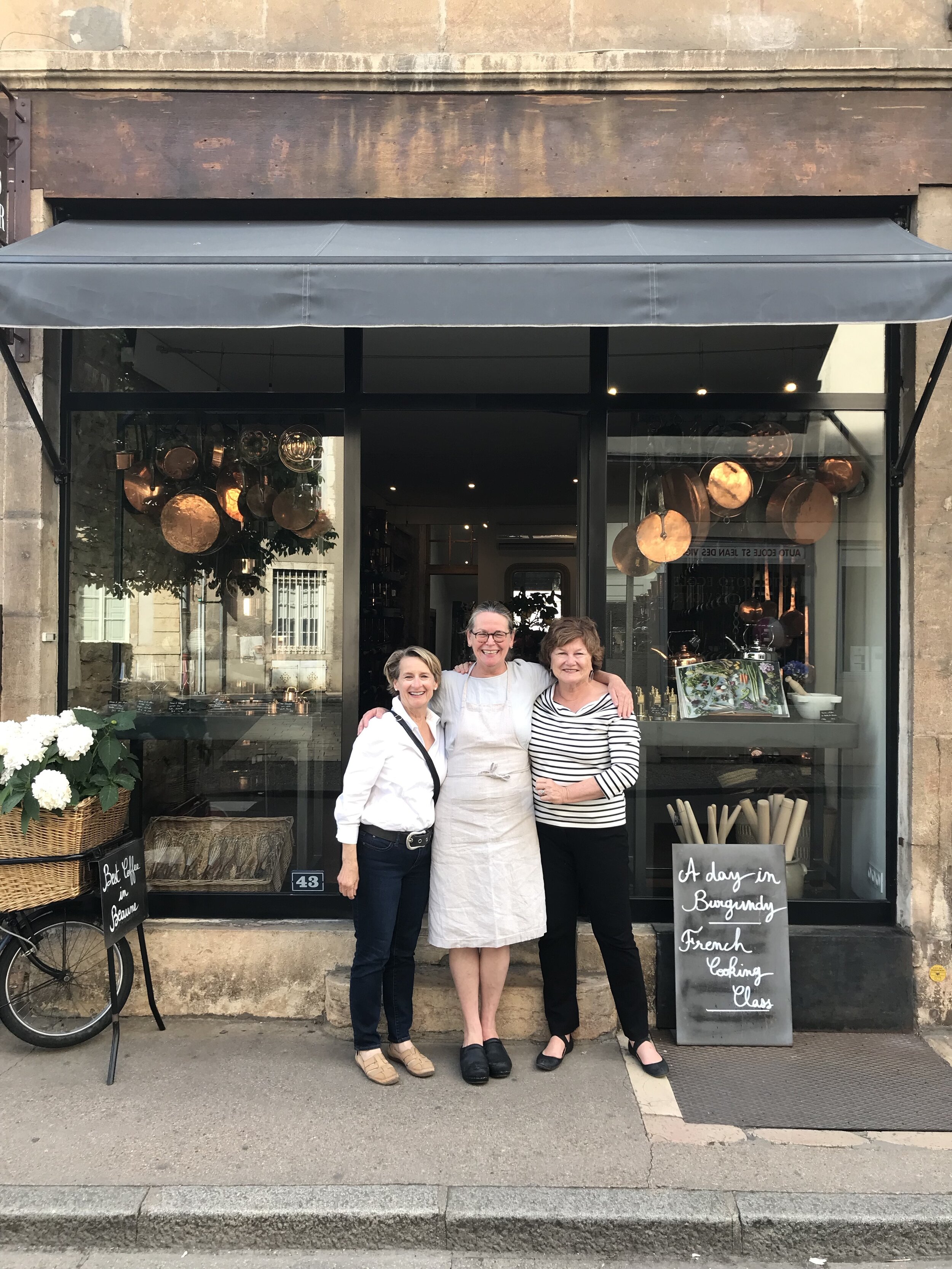À Kathy’s Maison
I have a dear friend who exudes “joie de vivre” whether she is here in San Diego, at her little stone house in Provence, or anywhere in the world. Ma Amie, Kathy Hurder. We are both Francophiles, and share the love of French country cooking, the wine, the copper, the markets, the brocantes, the lifestyle, and the beauty in the simplicity and quality of life.
With France opening up once again to tourists and foreigners, I remember with fond memories our last trip to France in 2019. Kathy and her charming husband, Ron Lauderbach, graciously invited us to their special corner of Provence. My husband, John, and I in turn invited them to share a weekend in Beaune, Burgundy, France, together a week later. We had so much fun, and yes, it was cherry season!
Sainte-Cécile-les Vignes Morning Market
No need to buy cherries this morning, as Kathy and Ron have their own happy cherry trees in their “petite jardin.” When it is cherry season, you enjoy them fresh, but also make a Cherry Clafoutis.
Cherry Clafoutis is a very popular French dessert, simple and seasonal, in which you can easily exchange seasonal fruit of the moment. If I remember correctly, we made Mimi Thorisson’s Cherry Clafoutis from her first cookbook, A Kitchen in France, and in her 2013 blog post, which she shares the recipe along with her complementary Duck Burger recipe. Yum!
Kathy and Ron, in Medieval Village, Séguret, Provence and overlooking Sablet, Provence
One of our incentives for a rendez-vous a week later in Beaune, besides the incredible Burgundy wine and regional food, was taking a “Day in Burgundy Cooking Class” with American ex-pats “mother daughter duo” Marjorie Taylor and Kendall Smith Franchini, at The Cook’s Atelier. Planned well in advance, Kathy and I were lucky to land the last two spots in a Saturday June cooking class. While at our cooking class, our fellas were happy to further explore Beaune and dabble in some wine tasting. Needless to say, it was an incredible day and experience, full of special memories. For more info on The Cook’s Atelier see below.
I can’t say enough about Beaune, Burgundy, and highly recommend spending some quality time there. It is really worth it to bike or hike into the surrounding world famous vineyards. There is a real sense and spirit of place, and the terroir is immaculately managed and revered.
Past and Present Merge in these Vineyards
A Special Burgundy Birthday for John
It is a real gift to have “joie de vivre” and the ability to put a spark in other people’s lives, just by being your passionate self. Merci Kathy and Ron!
Well Fed and Content in Beaune
French Fabulous!
The Cook’s Atelier, by Marjorie Taylor and Kendall Smith Franchini, is one of the best cooking classes I have been to. From start to finish, it is a whirlwind for your senses. I often thought about them, through this pandemic. Was this small family business surviving, with no classes, no brick and mortar storefront retail? Were they writing a new cookbook? Well, good news, yes, and yes, and yes.
The Cook’s Atelier hosts regular one day classes, and also offers week long master classes. The Cook’s Atelier has taken this gift of time to expand their country home outside of Beaune, creating a large potager and teaching kitchen. They are now growing most of their own fruit and vegetables for their culinary classes, and in the week long master class will be bringing the class to their country setting for more culinary instruction and Burgundian experience. Adding to this, they have expanded into custom copper gardening tools, found on their website. Amazing.
Another Related and Past Blog Link, The Cook’s Atelier
Bon Appétit and Bon Weekend…Bonnie














































